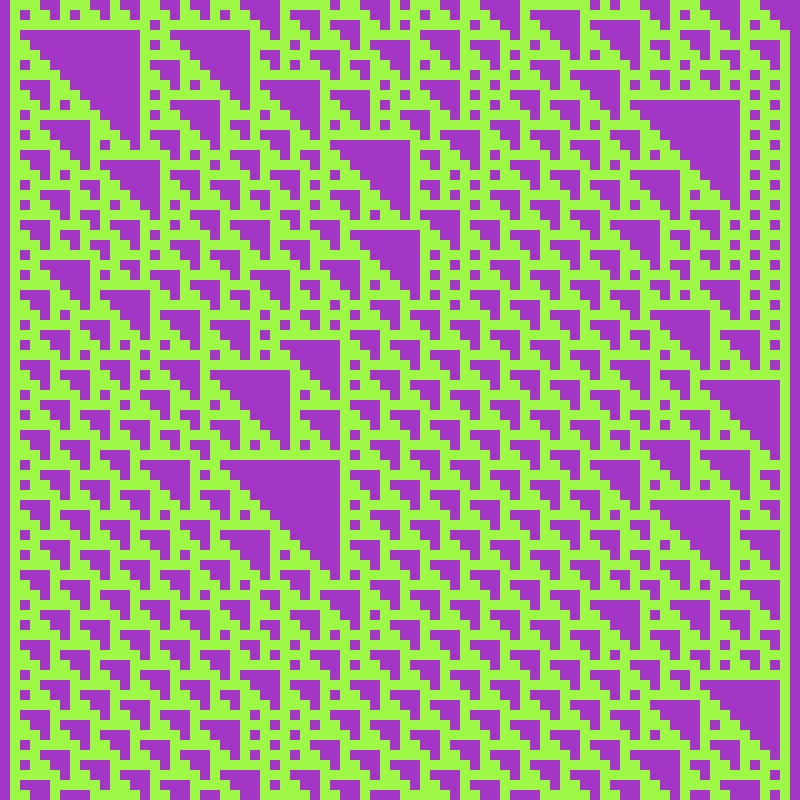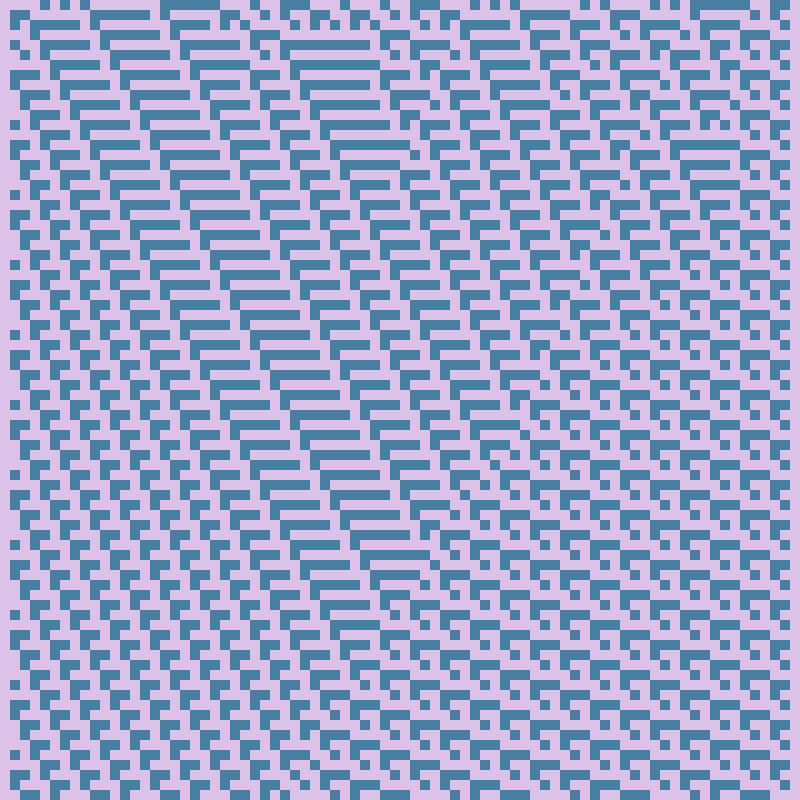A generator of monodimensional cellular automata with an arbitrary number of states, visualized as pixel rows in a RGB image. The automata generated have to 2, 3 or 4 states, as further increasing the number of states reduces the noticeability of patterns in the generations and makes the images generally less visually appealing.
Given a set of possible cell states, an array of cells is initialized with random states, serving as generation 0. The next state of a particular cell is determined by looking at its neighbors and evaluating the obtained configuration via a set of randomly generated rules. Each state is color coded and each generation is placed under its ancestor, ultimately forming an image.
Press ENTER to generate a new automaton.
We define neighbors of a cell i the cells numbered i-1 and i+1 (edge cases are not considered for simplicity). Given n possible cell states, we have to generate a set of rules for each possible configuration of three cells in a row, thus obtaining n^3 total cases.
These cases can be numbered and stored in an array, so that the next cell state for a cell in configuration m is equal to rules[m].
Each configuration can lead to one of the possible cell states: thus, the total number of cellular automata we can generate is equal to (configuration number)^n.
The algorithm randomly initializes the rules array, effectively picking one of the cellular automata at random.
Color coding is randomly generated. The automata often produce nice patterns, as the ones shown below:


